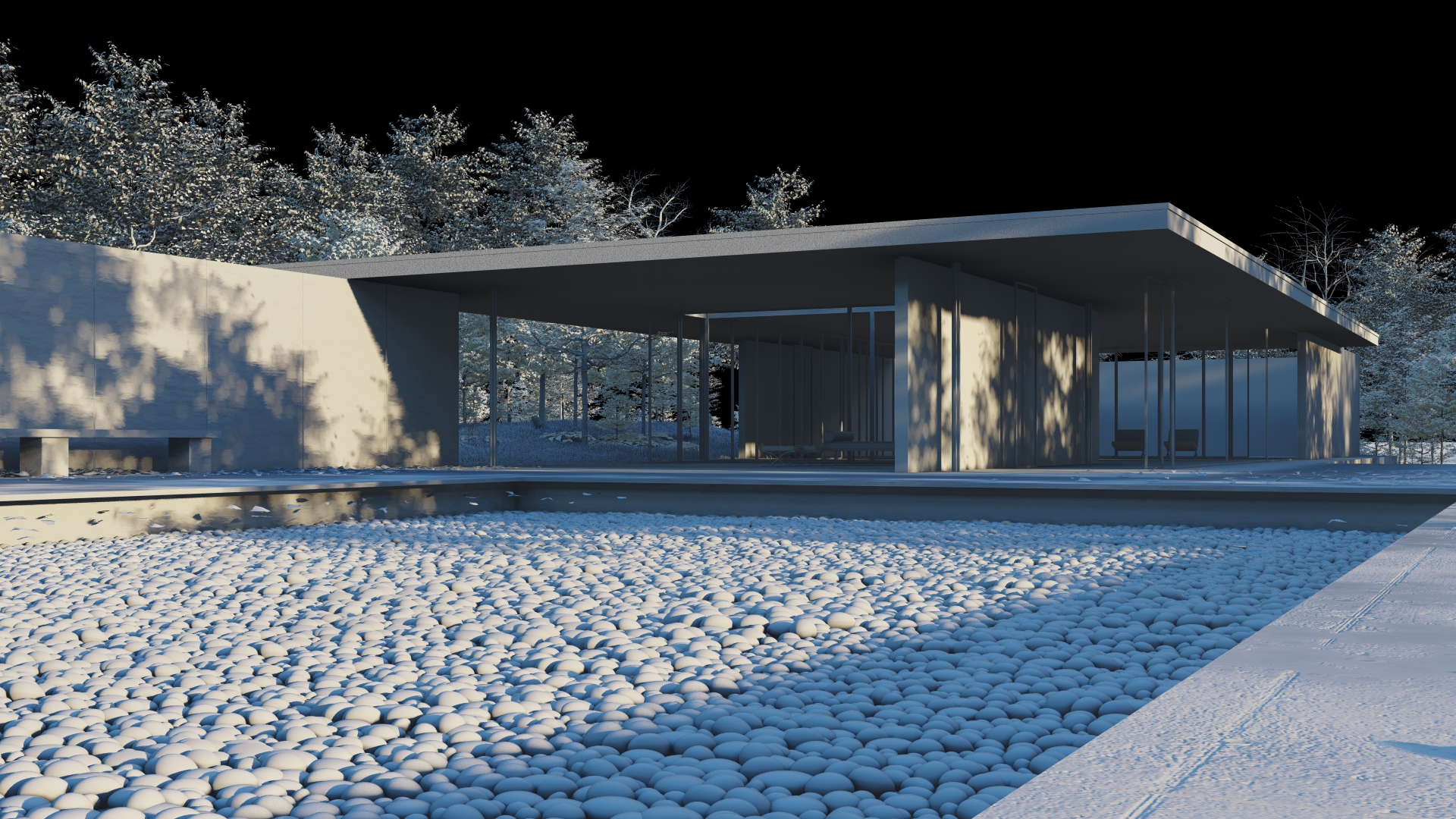The Barcelona Pavilion, originally designed by Ludwig Mies van der Rohe for the 1929 International Exposition in Barcelona, is one of the most celebrated works of modern architecture. Known for its minimalist elegance, innovative use of materials, and spatial harmony, the Pavilion has inspired architects, designers, and artists for decades.
Today, architectural visualization specialists like Visual Ennode bring this masterpiece back to life through state-of-the-art 3D rendering, transforming historical blueprints into cinematic visual experiences. This article explores how Visual Ennode’s visualization of the Barcelona Pavilion captures both the spirit of Mies’s vision and the emotional resonance of space, light, and material.
Before diving into the visualization process, it’s important to understand the Pavilion’s historical and architectural significance.
Commissioned as the German Pavilion for the 1929 International Exposition, the structure was intended as a temporary exhibition space to represent the new Weimar Republic. Mies van der Rohe’s design broke away from traditional architectural norms, featuring open-plan layouts, minimal ornamentation, and a deliberate focus on proportion, materiality, and light. Constructed from travertine, green marble, onyx, and chrome-clad steel, the Pavilion reflected a new architectural language - one of simplicity, precision, and refinement.
Although dismantled after the exposition, the Pavilion was reconstructed in the 1980s and now stands as a permanent cultural landmark in Barcelona.

(Visual Ennode"s modeling)
The Barcelona Pavilion is more than a building; it’s an exploration of space as experience.
Its defining features include:
Floating Roof - Supported by slender steel columns, giving the illusion of weightlessness.
Horizontal Emphasis - Creating a sense of calm and continuity between spaces.
Material Richness - The combination of stone, glass, and steel balances minimalism with luxury.
Open Flow - Walls act as spatial guides rather than barriers, blurring the boundary between interior and exterior.
These qualities make the Pavilion an ideal subject for architectural visualization - where light, texture, and perspective can be meticulously crafted to recreate the emotional essence of the space.
Visual Ennode is known for blending architectural accuracy with cinematic storytelling. Their visualization of the Barcelona Pavilion is not just a technical reproduction - it’s a curated experience that evokes mood, narrative, and spatial immersion.
While many 3D renders aim solely for realism, Visual Ennode focuses on realism with atmosphere. In their Barcelona Pavilion visuals, you’ll see sunlight filtering softly across the marble walls, reflections shimmering in the water basins, and delicate shadows that give depth to the minimalist geometry.
Mies’s original design relied heavily on the tactile quality of materials. Visual Ennode faithfully reproduces the rich travertine veining, the warm tones of onyx, and the crisp reflections of polished chrome - ensuring that viewers can almost feel the surfaces through the screen.
Light is the soul of the Barcelona Pavilion, and in visualization, it’s the key to bringing architecture alive. Visual Ennode experiments with different times of day - morning’s gentle glow, midday brightness, and the golden tones of sunset - to reveal how the Pavilion transforms under varying conditions.
Instead of static, textbook views, Visual Ennode frames each shot like a scene from a film. The camera angles guide the eye through spaces, encouraging viewers to walk mentally through the Pavilion and experience its flow.
For architectural heritage sites like the Barcelona Pavilion, visualization is more than aesthetic marketing - it’s a tool for preservation, education, and inspiration.
Preservation: High-quality visualizations create lasting records of design details, safeguarding them for future generations.
Education: Students and architects can study proportions, materials, and spatial relationships without traveling to the site.
Inspiration: Visualization rekindles interest in modernist principles and sparks dialogue about their relevance today.
We live in an era where architecture is consumed visually before it’s experienced physically. Platforms like Instagram, Behance, and architectural blogs amplify the reach of visualization work.
Visual Ennode’s Barcelona Pavilion renderings not only appeal to architects but also engage broader audiences who appreciate design, minimalism, and visual storytelling.
By merging technical fidelity with artistic interpretation, these visualizations bridge the gap between historical architecture and contemporary digital media.
Minimalist Elegance - The renders strip away distractions to focus on pure form and material.
Dynamic Lighting - Each scene shifts in mood depending on the time of day.
Textural Authenticity - From stone pores to glass reflections, the materials feel tangible.
Human Scale - Subtle inclusion of figures to give context without overpowering the architecture.
Natural Integration - Reflections in water and interplay of shadows enhance realism.
What sets Visual Ennode apart is their ability to make viewers feel the space. Looking at their Barcelona Pavilion imagery, one can sense the calmness of the reflecting pool, the precision of the steel columns, and the meditative rhythm of the travertine slabs.
This emotional engagement turns visualization from a static image into an invitation to inhabit the architecture, even if only virtually.
The Barcelona Pavilion remains a timeless example of modernist architecture - a symbol of simplicity, elegance, and spatial harmony. Through their visualization, Visual Ennode doesn’t just replicate this icon; they revitalize it for the digital age. By combining architectural accuracy with cinematic storytelling, they allow audiences worldwide to experience the Pavilion as Mies intended - as a seamless interplay of light, material, and space.
In the hands of skilled visualizers, architecture transcends time and geography, and the Barcelona Pavilion continues to inspire not just as a building in Barcelona, but as a global design experience.
Get connected
Head Office (USA)
2221 I St NW, Washington, DC 20037, USA
Seoul Office (Korea)
54, Gangnam-daero 136-gil, Gangnam-gu, Seoul, 06045, Republic of Korea
Ho Chi Minh City Office (Vietnam)
37 Hoàng Văn Thụ, Phường Cầu Kiệu, Hồ Chí Minh City, 70000, Vietnam
Let's connect
Join us
We're always on the lookout for passionate individuals to join our ever-growing team of creatives.
Check out the available at: Career